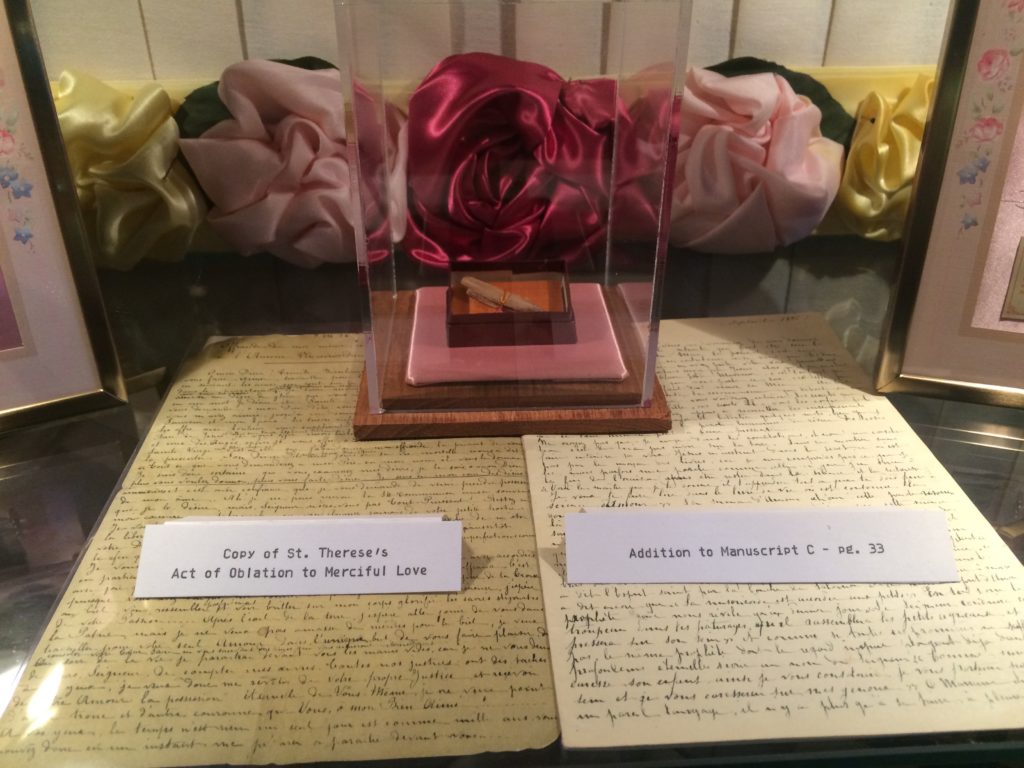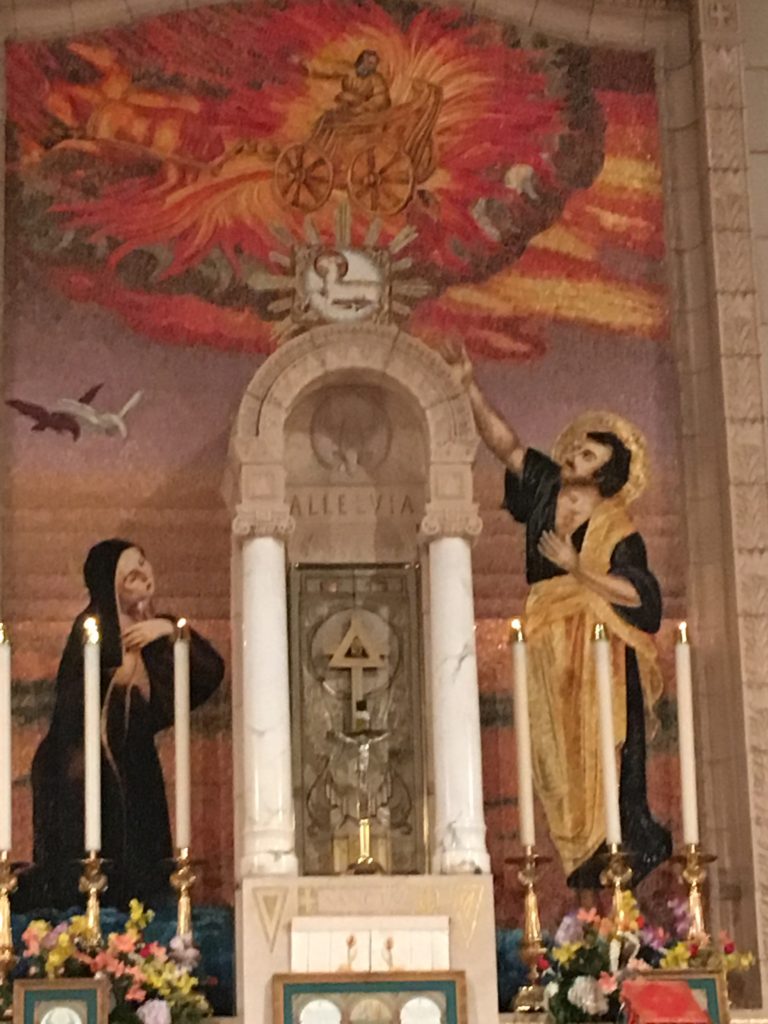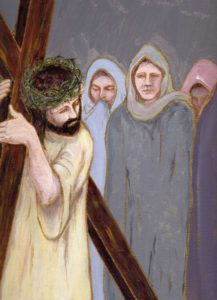
Feast Day Novena Prayer
St. Therese, Flower of fervor and love, please intercede for us. Fill our hearts with your pure love of God. As we approach and celebrate your feast day, make us more aware of the goodness of God and how well He tends His garden. Instill in us your little way of doing ordinary things with extra-ordinary love.
Give us the heart of a child who wonders at life and embraces everything with loving enthusiasm. Teach us your delight in God’s ways so that divine charity may blossom in our hearts. Little Flower of Jesus, bring our petitions (mention in silence here) before God, our Father.
With your confidence, we come before Jesus as God’s children, because you are our heavenly friend. As we celebrate the Feast Day of your homecoming in heaven, continue to shower roses and grace upon us.
St. Therese’s Path of Prayer
Thérèse devised a daring new path in life, her little way of spiritual childhood – one that she lived in prayer. Her approach to God was intensely personal and creative, but it was balanced by a deep liturgical life. She tells us how she loved the Divine Office. Her First Holy Communion was a major turning point in her life of prayer. From her childhood she loved daily Mass.
She speaks of her preparation for the Sacraments of Penance and Confirmation. Through the daily family reading of Dom Gueranger’s The Liturgical Year, she prepared for the great feasts and actively participated in them. She situates some of the marvelous graces of her life in the context of the liturgical feasts: her conversion occurred after Midnight Mass on Christmas Eve; she revealed her desire to enter Carmel after Vespers on Pentecost Sunday; she entered on the Feast of the Annunciation, made her profession on Mary’s Birthday; offered herself to God’s merciful love on Trinity Sunday; she received the call to join her Bridegroom and began her dark night of faith during the Sacred Tridium of Holy Week. Thérèse was very aware of the graces of these liturgical feasts. This balance of personal and liturgical prayer is also seen in her relationship to the Church. As she developed, she became more aware of God’s infinite love for her and also of her place in the Church. Her prayer is not only her own; it is the prayer of the Church. As she began mature prayer after her conversion, she prayed for Pranzini (a known criminal); her prayer was answered. After her pilgrimage to Rome her zeal extended to priests. Eventually, united in prayer with the Sacred Heart of Jesus, the whole world is the area of her love and concern. She found the lever and fulcrum to raise the world.
Thérèse’s prayer is deeply personal, united simply with God in the very depths of her soul where she is unique and totally herself. There, too, she is open to the Church and to the whole world. She teaches us, as does St. Teresa in the Seventh Mansions, that the gift of contemplation expands into love for the Church; that it is apostolic.
In St. Teresa of Lisieux, A Spiritual Renaissance, Father Petitot says that Thérèse freed us from a method. This can be an oversimplification. She used vocal and formal prayers all her life. She offered herself to God in a formula her mother taught her. The “Our Father” and “The Lord is my Shepherd” sustained her in her agony.
As a child she was deep and intuitive. Through reflecting on nature, she got valuable insights and practical ideas. Thus a storm or the sea at Trouville show her God’s power; stale bread, a dead lamb, friendship unreturned, loneliness, led her to thoughts of God, life and eternity. This was prayer; yet we find her seeking a method. She asked Sister Henrietta of the Abbey to teach her how to pray. The Sister explained that for her praying meant opening her heart to God and talking to Him like a child with its father. From Sister Henrietta Thérèse learned simplicity and openness with God in prayer of the heart.
Having entered Carmel Thérèse found dryness and insipidity in prayer. She sought a method to help her during the formal hours of prayer. These two hours daily, faithfully observed, were difficult times – she got her insights at other times. The method she adopted was that of reflective reading with outbursts of prayer of the heart. It seems that this was the source of her extraordinary knowledge of St. John of the Cross’ works. While she was 17 and 18 years of age, she read his works prayerfully. This deep personal knowledge will later save her sanity, for St. John gave her a map of the terrain she will travel in her fearful and terrible dark nights.
It was especially by meditative reading of Sacred Scripture, in particular the Gospels, that she prayed. She would savor the words, penetrate their meaning and act on the lights received. She slowly prayed the words of the Our Father, the Hail Mary and some of the Psalms.
Thus we see that Thérèse does teach us the value of a method, one that gives stability to prayer. It is not complicated, composed of divisions and subdivisions. It is simple, the way of a child who uses all the help it can get. As a young girl she used the formula taught her by her mother or Pauline; later she used prayers of holy people; finally, she responded with love to the infinite love of God revealed in Sacred Scripture, like Mary hearing the Word of God and treasuring it in her heart
Thérèse’s prayer is inescapably linked with her life. Here she is a true daughter of Teresa of Avila. You cannot live one way and pray another. “My words fly up, my thoughts remain below. Words without thoughts never to heaven go,” said Claudius in “Hamlet.” Prayer is communicating with God, being in His presence in all the naked truth of ourselves. We are most ourselves when we pray. In prayer we hear God say, “I love you as you are” and we listen and respond, “I love you.” If our life is not a life of love we cannot say that.
SOURCE: Seattle OCDS Congress, date unknown






















